Peace Memorial Park - Heiwa Kinen Koen
When we
visited the Hiroshima Peace Memorial Park, we arrived at Hiroshima Station in the
morning and decided to walk from Station via our hotel to the Peace park. Our
Hotel was only 5 mins from the station and after dropping off our luggage at
the hotel, it was then only a 30min walk to the Peace park, which was enjoyable
as we were blessed with a warm sunny day.
Alternatively,
the Peace Memorial Park can be reached from Hiroshima Station by taking the
tram to the Genbaku-Domu Mae stop, which only takes 15 minutes. Also, there are
three lines of loop sightseeing buses that stop at the Peace Park.
The park is
hugged by rivers on both sides with multiple bridges to access the park. To
reach the park we walked along peace boulevard and crossed one of the bridges
to reach the park and the peace museum. At the front of the museum there was a
large fountain, shrubs and planted display.
The Peace
Memorial Museum consists of two buildings and is only 200 yen (£1.50) admission
fee. The museum tells the history of Hiroshima, the development and destruction
of nuclear weapons and focuses on the events of August 6th when the
bomb was dropped and its deadly outcome. There are collections of items
salvaged from the aftermath of the bomb on display, which are quite confronting,
personal and upsetting. The museum’s aim is to serve as a reminder that we
should not take peace for granted! And how deadly war can be…
The Peace Memorial Park is situated behind the museum, which is hard to miss being 120,000 square meters! The peace park is one of the most prominent features of the city. The park is very impressive and the first striking factor that hits you is the large, grassed area and central wide path, with the memorial monument in the foreground and the A-Bomb Dome in the background across the river, with the park then being surrounded in trees and the city landscape.

Just north of the path through the park is the Children’s Peace Monument and dedicated to the children that lost their lives to the bomb this was built in 1958. The monument was inspired by Sadako Sasaki, who was only two years old when the bomb was dropped. She developed leukaemia at 11 years old and decided to fold 1000 paper cranes, as in Japan, cranes are a symbol of longevity and happiness…she never finished, but her classmates finished folding the rest. The story of Sadako inspired nationwide paper crane folding that continues to this day and are sent to the monument.
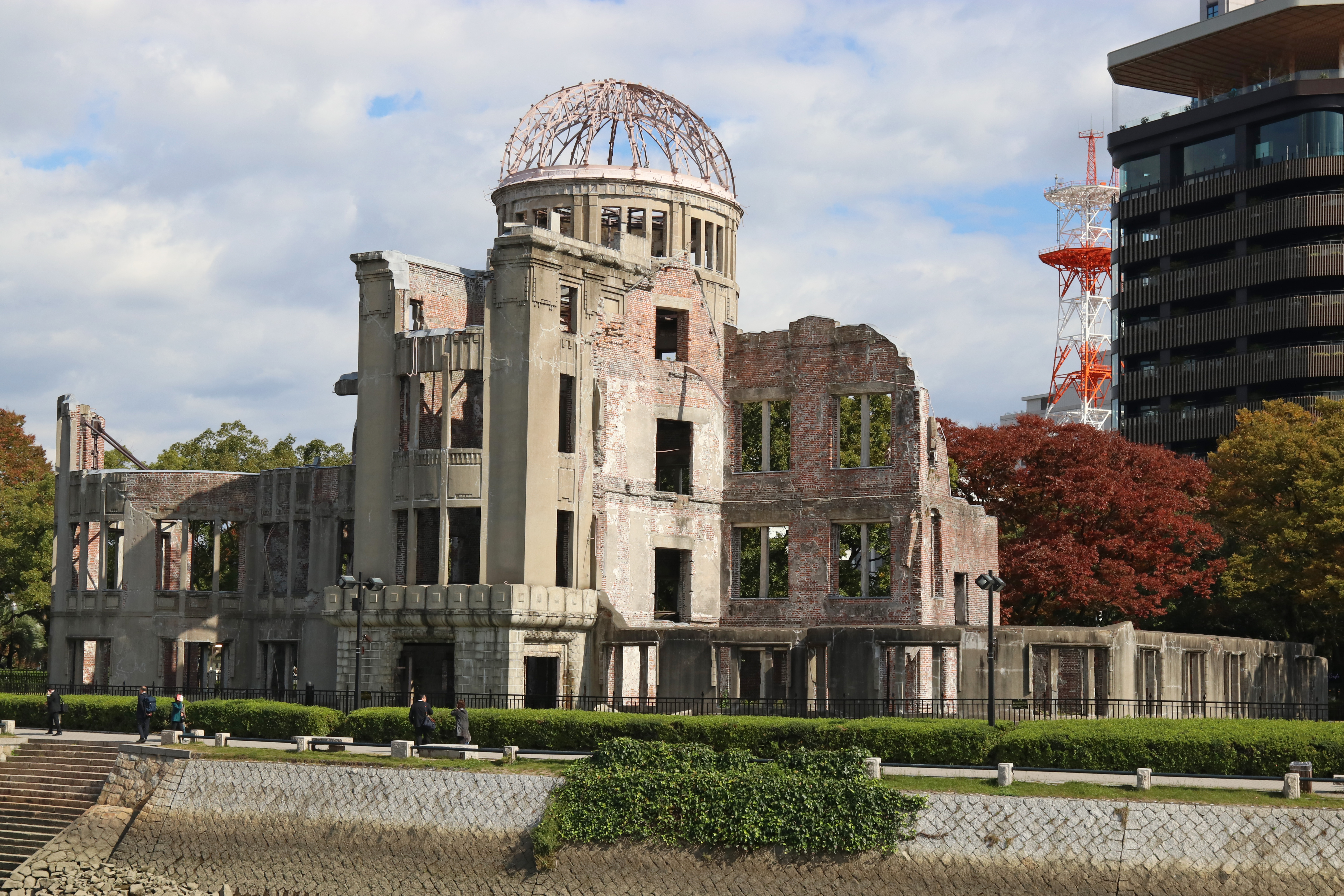
The Atomic Bomb Dome is probably the most known building of Hiroshima and its peace park. It is the harshest reminder of the destruction on the fatal day in 1945 when the bomb exploded almost directly above it killing everyone inside. Build by a Cvech architect in 1915, it was an Industrial Promotion Hall and was one of the few buildings that was left standing. Apparently, there were many debates after the war what to do with the building, but a decision was made to preserve the shell as a memorial.
The building has since become a symbol of the city’s haunted past and was declared a UNESCO World Heritage Site in 1996. There was certainly an aura surrounding the building…
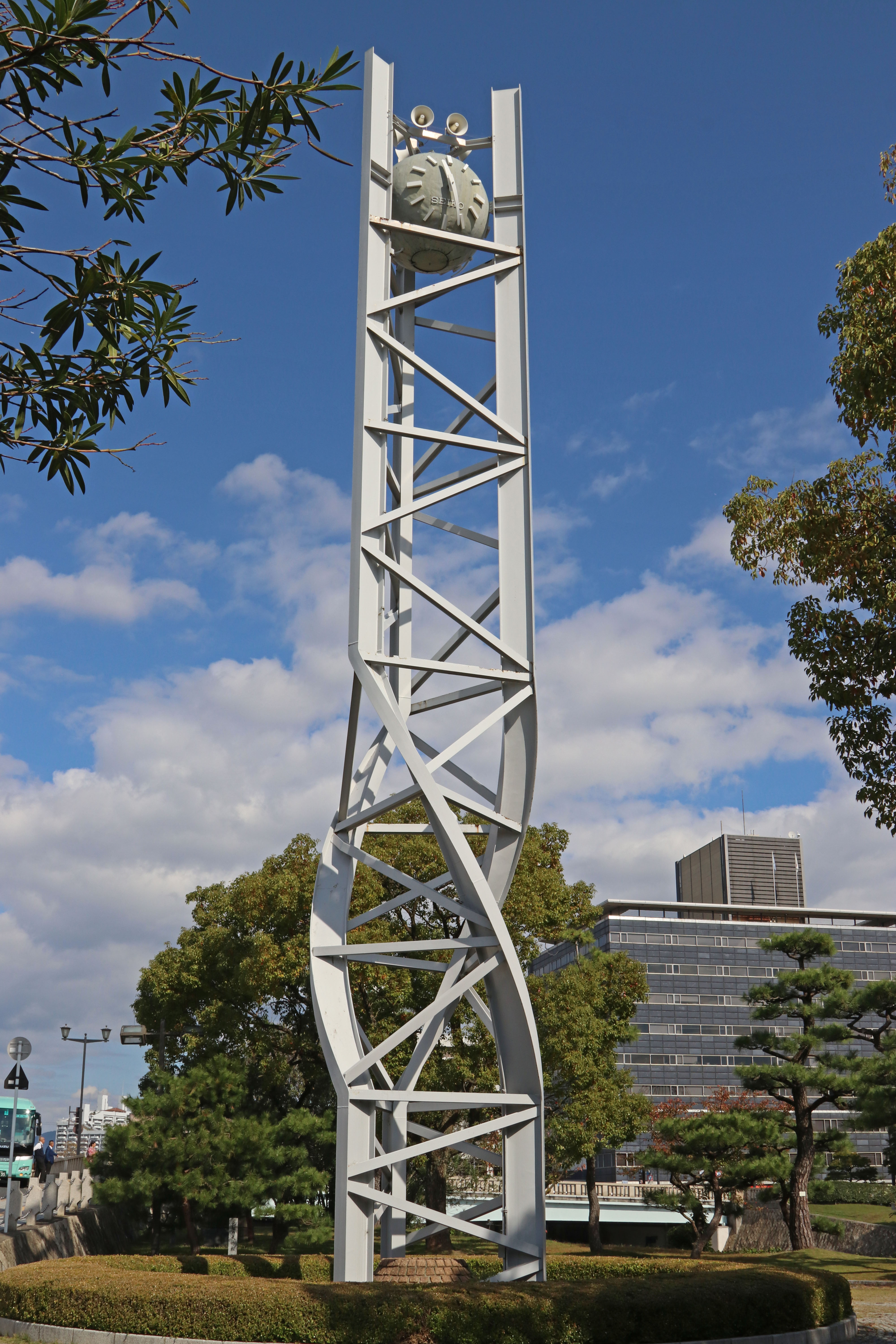
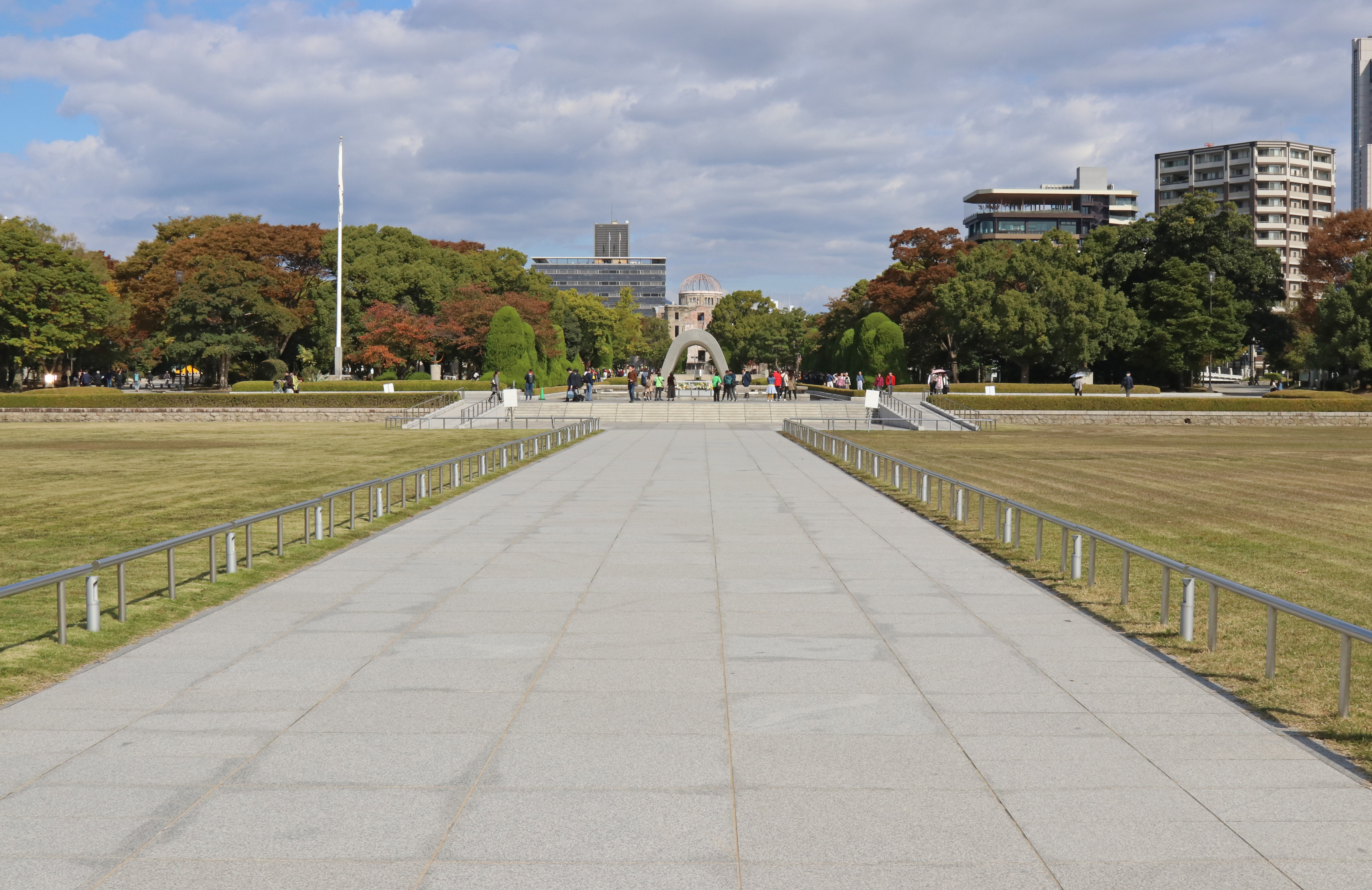
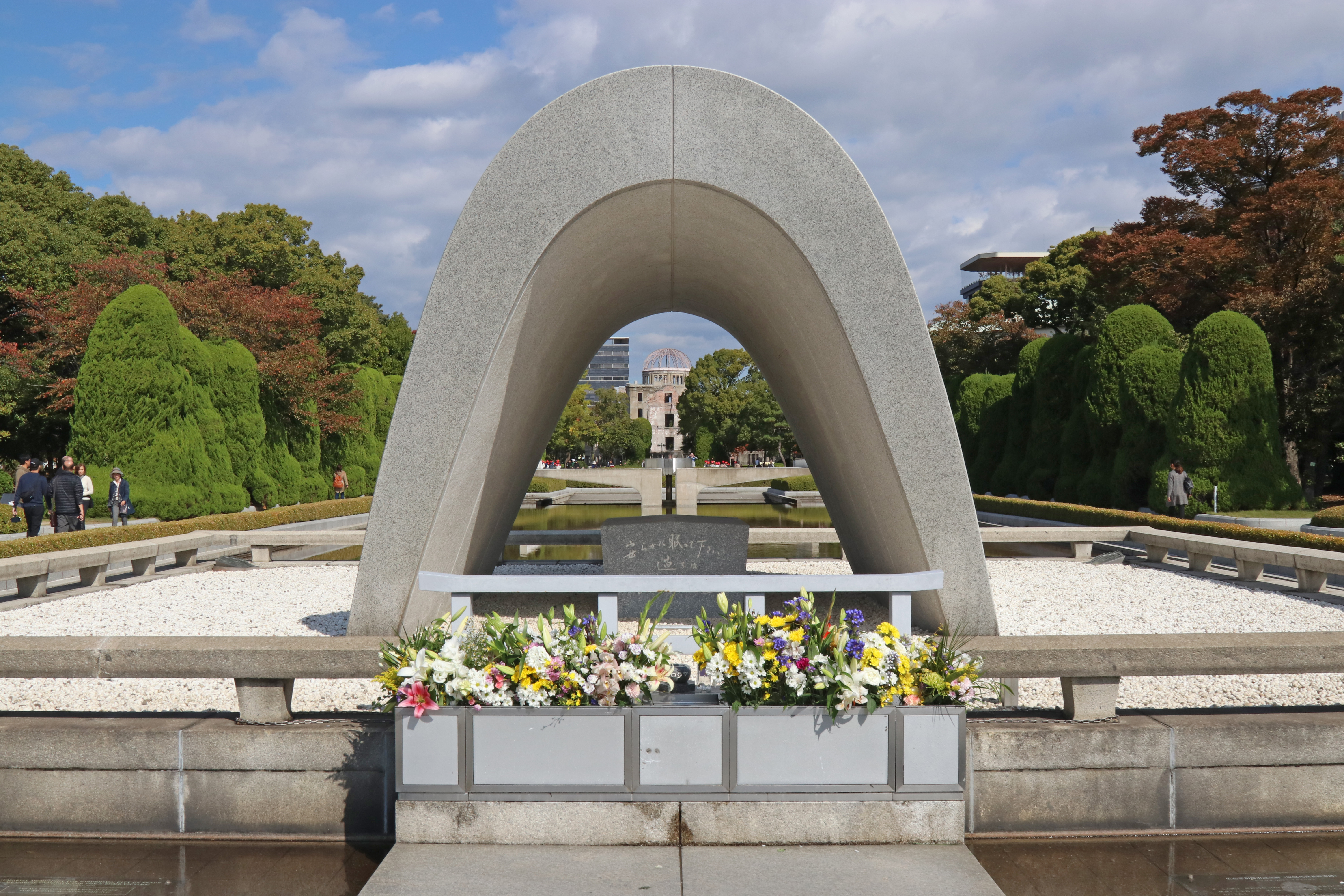
The Hiroshima Victims Memorial Cenotaph is an arched monument and holds the names of all the known victims of the bomb in a stone chest below the arch, there are over 220,000 names… The Flame of Peace Monument has a flame in the centre, and is set to burn on until all nuclear weapons are gone…
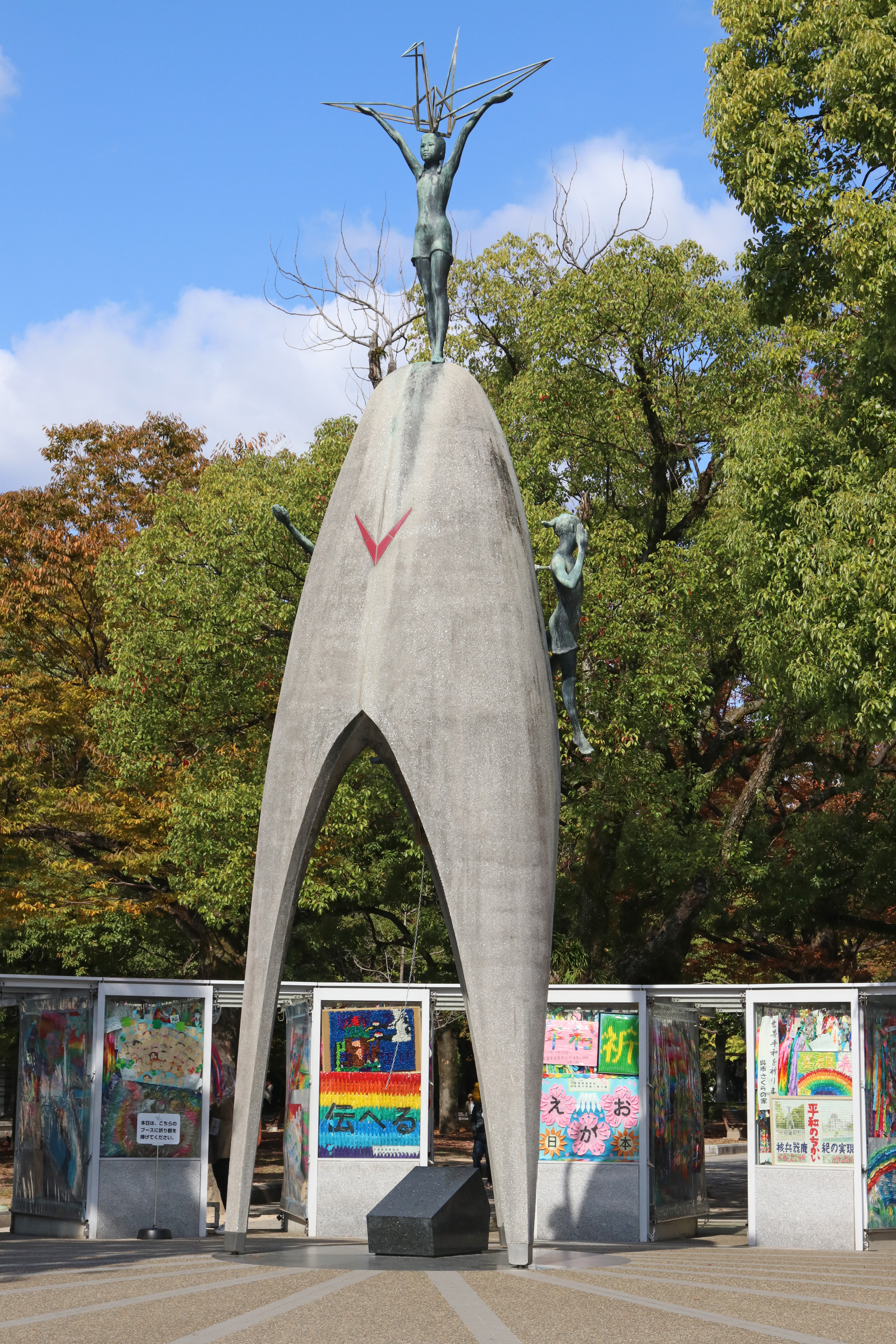

There are many other monuments and statues situated in the park, and plenty of benches within the park and along the river across from the Atomic Bomb Dome, making it a pleasant area, were one can sit and reflect.
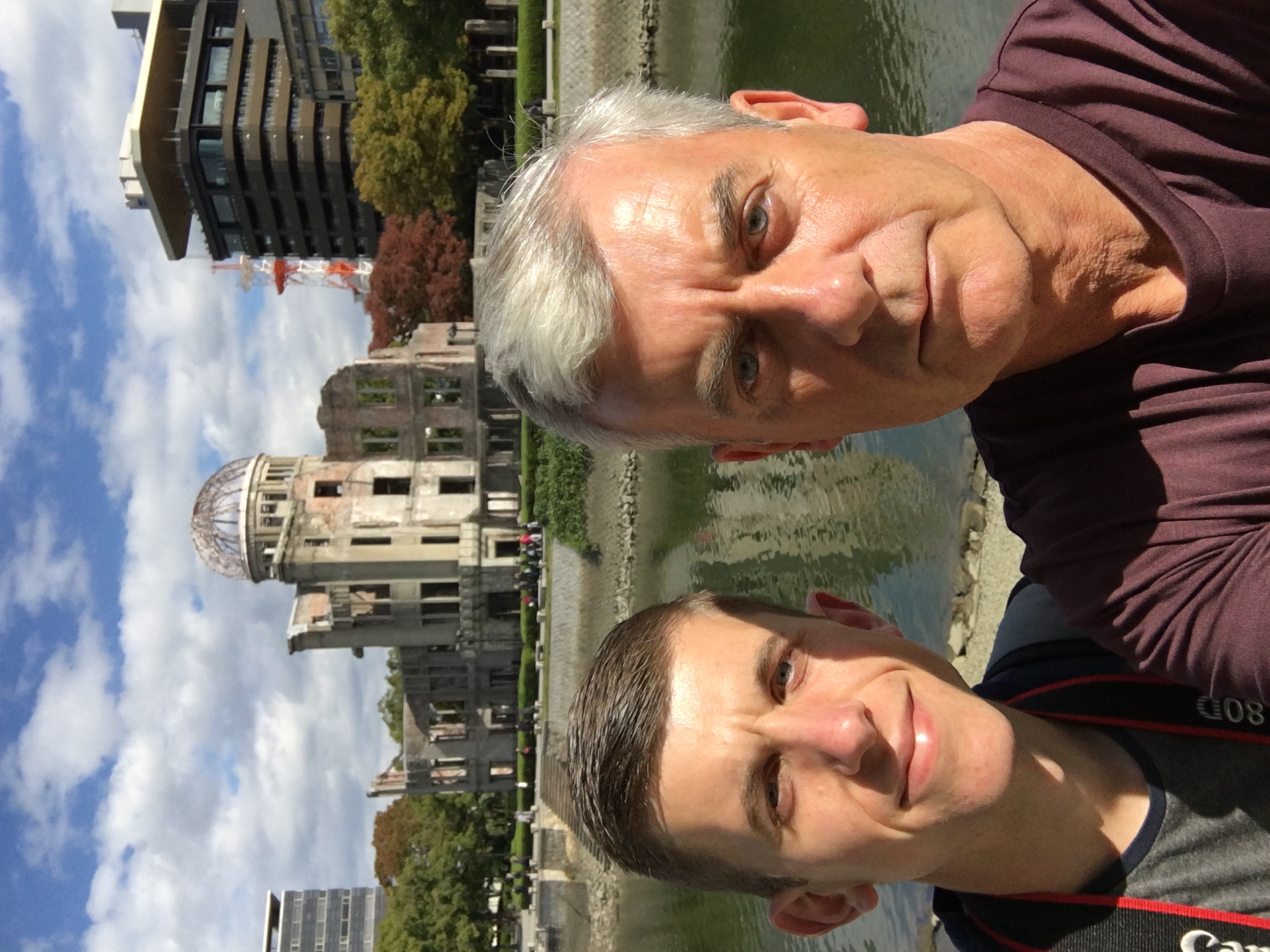
Before the
bomb, the area that is now the Peace Park was the political and commercial
heart of the city, this was the reason why it was chosen as the pilot’s target.
Four years after on the day of the bomb, it was agreed that the area would not
be redeveloped but instead made and devoted to peace memorial amenities.
Every year
on the anniversary of the bomb, a ceremony is held in the park. Were speeches
are made, wreathes are laid out at the Cenotaph and a moment of silence is held
at 8:15am. There are other activities that then occur throughout the day.
The
Hiroshima Peace Memorial Park and Atomic Bomb Dome were very moving and sombre,
which could be felt in the atmosphere from the fellow visitors something we
will not forget.
If visiting Hiroshima Prefecture this is a must place to visit and one that should be on everyone’s bucket list of places to visit. This is one place we will be visiting again hopefully.
